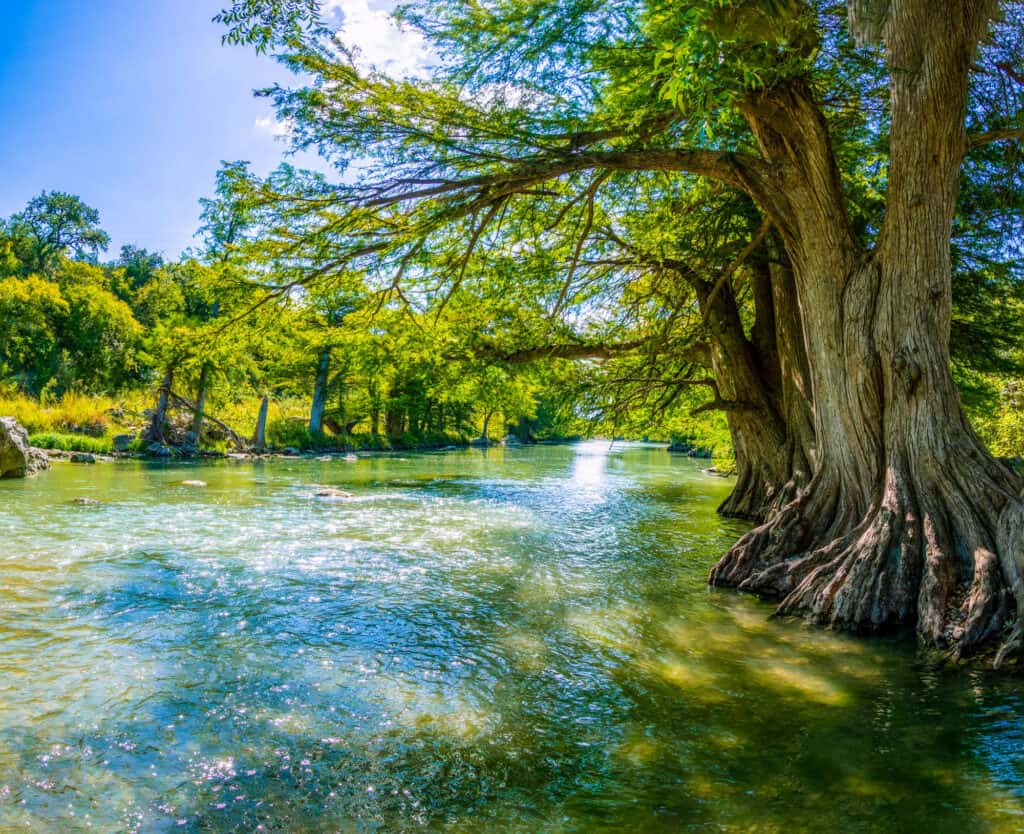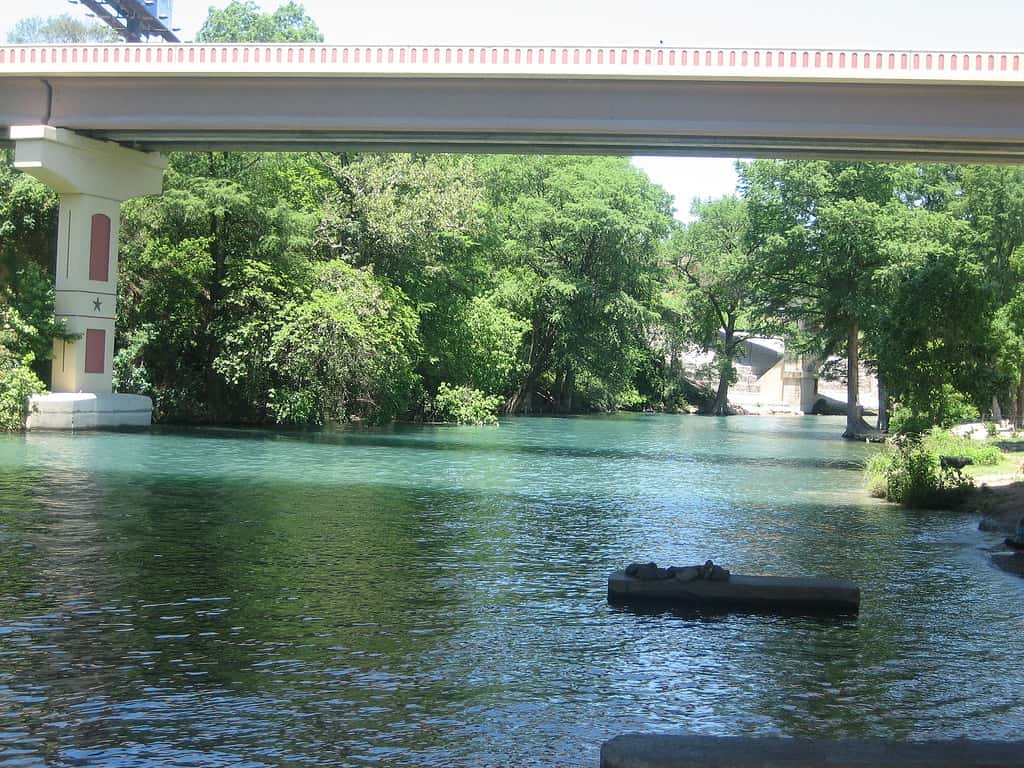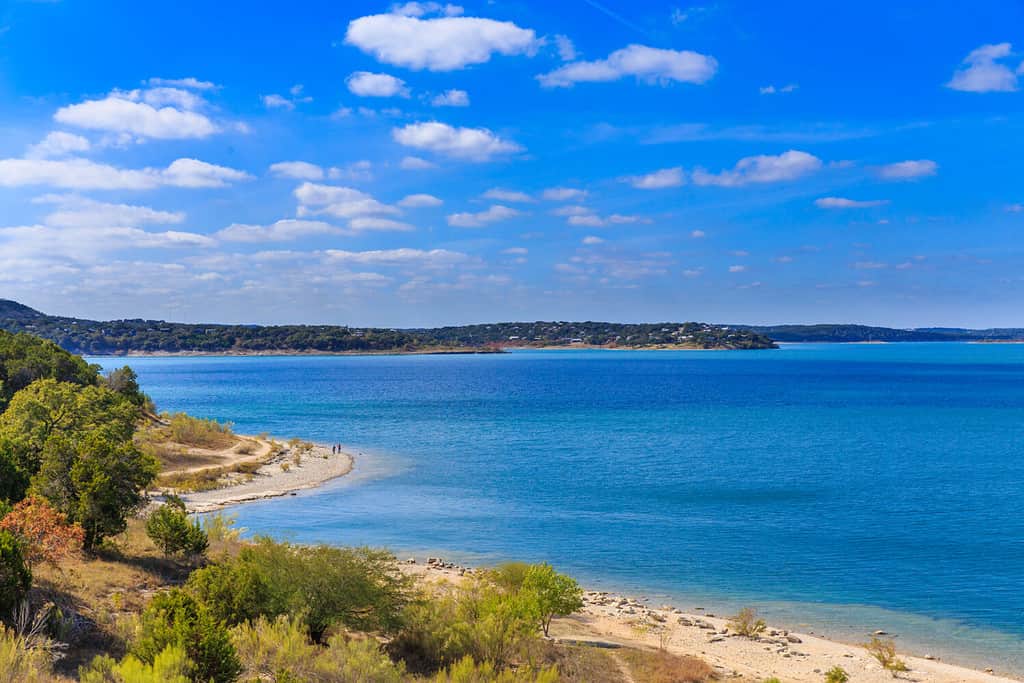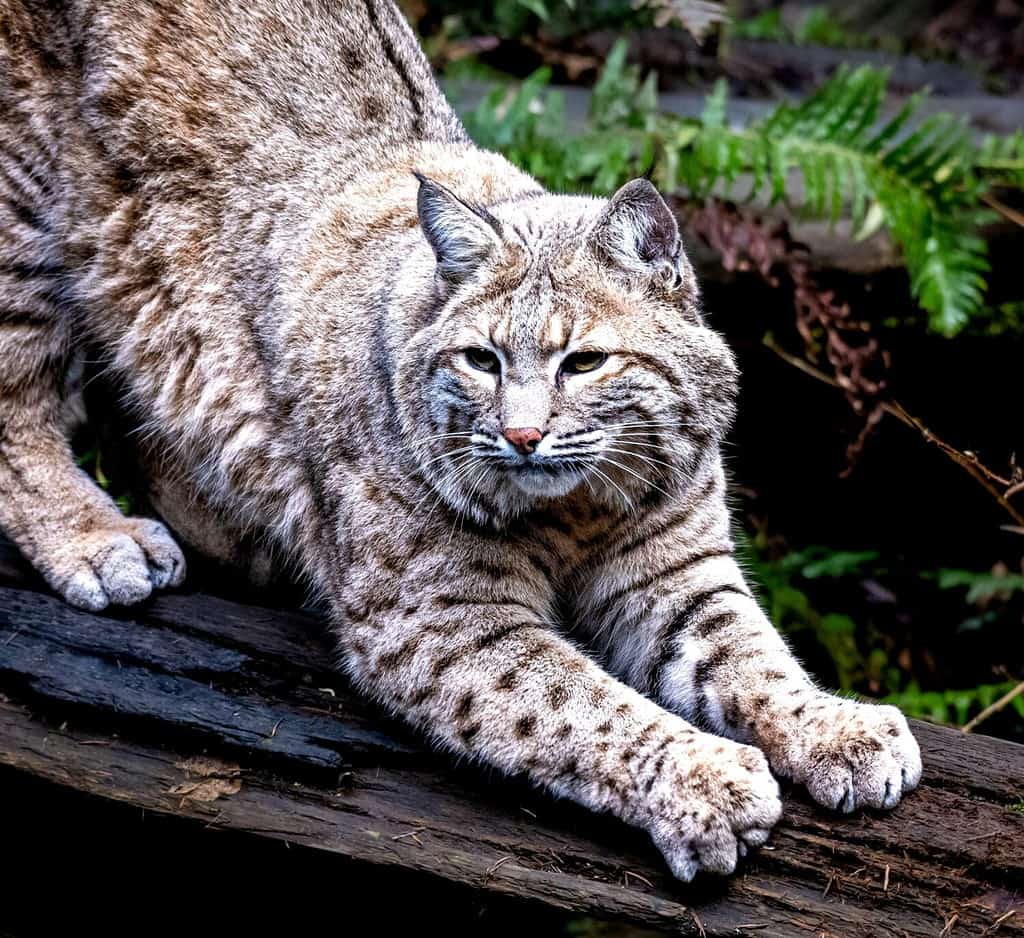Flowing from Kerr County, Texas, to the San Antonio Bay in the Guld of Mexico, the Guadalupe River contributes majorly to the life of the state. The river could, in some ways, be thought of the as a vein of life blood within the Lone Star State, with its rich history, destination points, and influence on settlements and more. But how wide is the Guadalupe River, this stunning life stream? Let’s take a look and find out.
How Wide is the Guadalupe River at Its Widest Point?

Just how wide is the Guadalupe River? Records show 30 to 40 wide in some sections, but widens out at points where lakes become part of the water flow.
©iStock.com/Thomas Males
Reports from the Texas government seem to lack much of the information on the Guadalupe in all sections. But it is recorded that the river is between 30 and 40 feet wide in the 39-mile section in Kendall County. High limestone bluffs line the banks, along with typical Edwards Plateau vegetation.
Geography of the Guadalupe River

The Guadalupe River flows throughout Texas, including through cities and historic sites.
©Billy Hathorn at English Wikipedia, CC BY-SA 3.0 <http://creativecommons.org/licenses/by-sa/3.0/>, via Wikimedia Commons – License
The Guadalupe River flows through Texas from Texas Hill Country in the upper part of the river to the lower part at the outlet of Canyon Lake near New Braunfels.
In the upper part of the river, smaller, faster waters rush through limestone embankments, shaded by bald cypress and pecan trees. The river forms by two main tributary forks, the South and the North Forks of the Guadalupe Rivers. East of Boerne, bordering Comal County and Kendall County, the river flows through the favored Guadalupe State Park.
Then the river flows down to Canyon Lake. The flow of the river in this area is controlled by Canyon Dam and how much rainfall the river receives. Near New Braunfels, the river is joined by Comal River and the San Marcos River near Gonzales. North of Tivoli, the San Antonio River flows into it and helps form a delta that flows out into the San Antonio Bay estuary at Guadalupe Bay.
A Brief History of the Guadalupe River

Canyon Lake is part of the Guadalupe River in Texas. The stunning watershed has helped to shape the state into what it is today.
©Tricia Daniel/Shutterstock.com
In 1689, the Guadalupe River first earned its eventual moniker for the Lady of Guadalupe. It was first called after Nuestra Senora de Guadalupe by Alonso de Leon. Later on, it was renamed as the San Augustin by Domingo Teran de los Rios, but eventually the name reverted back to the Guadalupe. The First Nations in the area left behind evidence, indicating that Karankawa, Huaco, and Tonkawa tribes once lived in the area.
German immigrants, led by Prince Solms, traveled overland from Indianola to the first German settlement in Texas, in New Braunfels. When they reached the river, the water was too due to cross, thanks to winter rains. So, Prince Solms crossed the river on horseback but was quickly followed by Betty Holekamp, a woman unwilling to be outdone. She is known as the first White woman to cross the river on horseback.
Wildlife Along the Guadalupe River

Bobcats, bats, fox squirrels, opossums, eagles, doves, grackles, hawks, and many more critters live along the 11th longest river in the United States, the Guadalupe River.
©Jeff Westhead/Shutterstock.com
When you head to the Guadalupe River, you’re surely in for a treat. At least, if you love wildlife viewing you are. You could spot any of these amazing animals in or along the river.
- Eastern fox squirrels
- Mexican brown bats
- Coyotes
- Skunks
- Opossums
- Mourning doves
- Raccoons
- White-tailed deer
- Banded armadillos
- Bobcats
- Long-tailed weasels
- Black-capped vireos
- Golden-cheeked warblers
- Belted kingfishers
- American kestrels
- American goldfinches
- Cooper’s hawks
- Grackles
- Redbirds
- Blue jays
- Rainbow trout
- Striped bass
- Small-mouth bass
- Large-mouth bass
- Guadalupe bass
- Carp
- Crappie
- Catfish
- Alligator gar
- Perch
- Cichlids
- Sunfish
The photo featured at the top of this post is © Richard A McMillin/Shutterstock.com
Thank you for reading! Have some feedback for us? Contact the AZ Animals editorial team.






